The Reinhetsgebot - German Purity Law
16th Oct 2018
Germany is undeniably one of the most iconic and pioneering countries for beer. It is even rated as one of the top 10 countries for the best beers according to multiple ranking sites.
The quality of the German beers is mostly attributed to Reinheitsgebot also known as the ‘beer purity law’ which has set the high standards for beer brewing for more than 500 years.
For many people in foreign countries, beer means Germany and because Germans love their beer so much, they celebrate a day of beer every year on 23 April - the same date Purity law was decreed.
As Hans-Georg Eils, president of the German Brewers Federation, suggested “If Germany is still regarded as the undisputed beer nation, that is due to the purity law.”
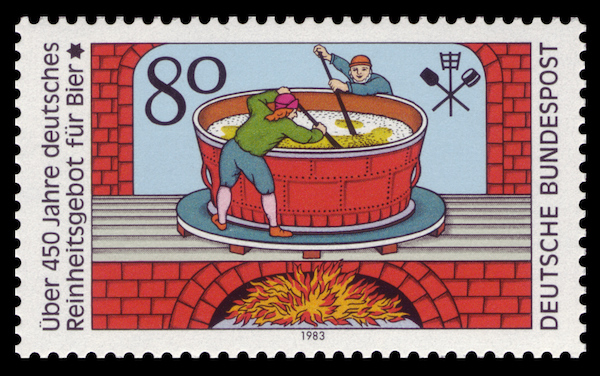
Image: wikipedia
So What Exactly Is The Reinhetsgebot Law?
Reinheitsgebot, also known as the ‘purity law’, is said to be the oldest, still-enforced food regulation in the world.
It was ordered by Duke Wilhelm IV of Bavaria in the year 1516. The Purity law required that “nothing other than barley, hops, and water” be used to produce beer.
Yeast is the fourth ingredient that is allowed, but it’s not listed in the original law because yeast’s role in the fermentation process had not yet been discovered at the time that it was written.
The German purity law was initially implemented in Bavaria but was gradually adopted by other German states.
Since 1906, the purity law governs beer brewing in all of Germany. A variety of other beer regulations also existed in Germany during the Middle Ages, such as Nuremberg in 1293 and Erfurt in 1351, but only Reinheitsgebot has been enforced until today.
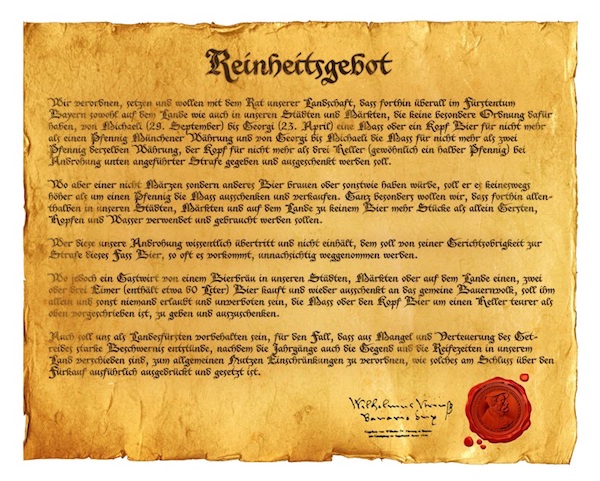
Image: justbeerapp
Why Was It Introduced?
There were two main reasons for implementing the Purity law.
First, the law aims to protect beer consumers from poor standard and potentially lethal beverages. Before the advent of advanced sewage systems, water supplies were often polluted especially in overcrowded urban centers so people drank beer to keep thirst at bay.
Some unscrupulous brewers took advantage of the situation so they increased the prices and added dubious toxic ingredients as preservatives or flavourings, such as hallucinogenic plants, soot, poisonous roots, wood shavings, and other ingredients. These ingredients could have lead to illness or even death for someone who drank the contaminated beer.
The Bavarian authorities then insisted that only water, barley, and hops could be used to brew beer.
Second, the law aims to ban the use of wheat in beer brewing because it might harm bread production, the staple food of medieval Germany.
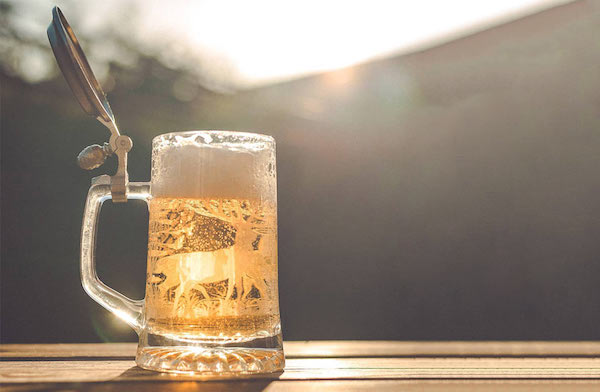
Image: Grantelhuber
Changes Over Time
Some sources claim that the law has been essentially unchanged since its adoption. The original law limits the beers to hops, barley, and water.
Wheat was excluded since it was an an important ingredient in bread, reserved for bakers, which is why barley was specified as the grain to be used in beer brewing. Later, the Wittelsbach monarchy created lucrative special permits for wheat beer.
During the mid-1500s, Bavaria began to allow ingredients such as coriander, bay leaf, and wheat. This enabled the opening of Bavaria’s first wheat beer brewery in Kelheim in 1607. This wheat beer brewery was purchased by the Schneider family in 1928 and now known as Schneider Weisse. The Schneider Weisse brewery stick to the purity law but they focus their craft on the hops, the ingredient that can mimic certain fruits and complement wheat.
There was not any mention of ‘purity law’ until 1918, when it was used by a member of a Bavarian state parliament. Thus, the law was just called Reinheitsgebot aka purity order.
Modern versions of the law added yeast as one of the key ingredients after the discovery of its role in fermentation. The basic law now declares that only malted grains, hops, water and yeast are permitted.
Criticisms Over The Law
The purity law is the subject of a greater debate than ever before not just between foreign beer producers and German brewers. The dispute also exists amongst the German brewing industry itself. Most however proudly view it as part of the country’s cultural identity, with up to 85% of the population supporting the law, according a recent survey which represents the nation’s main breweries.
German brewers unhappy with the restrictions claims that it has lead to uniformity and encouraged industrial scale production rather than innovation in the industry. They claim it removes the creative licence and perpetuates a market of very similar beers. For marketing professionals, the purity law is a disaster as it is not easy to be creative and imaginative with a product that contains only four ingredients.
On the other hand, Weltenburg head brewer believes otherwise. In his BBC interview, he explained that nothing about the law or tradition has limited his creativity, as the variety of ingredients, temperatures and time limits still allow for millions of possible outcomes.
Moreover, some critics claim that the purity law was not really aimed to protect consumers from ingredients that could be hazardous to their health, but rather to keep undesired competitors out and maximise profits. For example, tiny particles of a synthetic polymer, polyvinylpolypyrrolidone, are used to bind suspended matter in unfiltered brew. This substance does not have to be listed on the label because it is no longer detectable in the finished beer.
Some brewers also use diatomaceous earth for filtering. Others use hops extract instead of the real thing. In other words, many things are allowed to go into beers as long as they do not enter into a chemical reaction with the brew.
There are also rebel brewers who don’t abide by the rules. They use sugar, chocolate, and orange rind as their added ingredients. Under the Purity law, they can’t market these products as ‘beer’. Instead, they must call them by the name of the specific style such as stout or IPA, for example, then market them as ‘mixed beer drinks.’
Other German brewers remain traditionalists. With 100 varieties of hops, 40 types of barley and malt, and 200 strains of yeast, these brewers believe that there is still plenty of room for innovation. They just spend much of their time and expertise searching for the right malt, hops and yeast strains to achieve a desired flavour. For example, a chocolate porter may taste like a dark chocolate with espresso due to the selection of dark roasted malts.
At the end of the day, it’s in everyone’s interest to be producing excellent beers.
Tool For Marketing
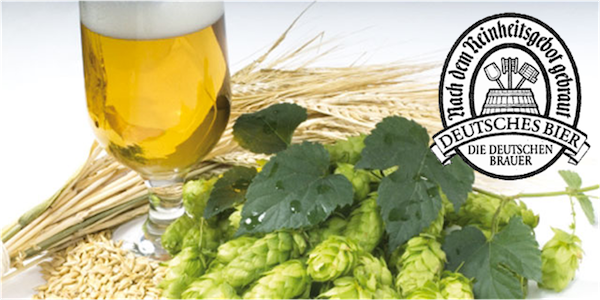
Image: imgur
Because of strong German consumer preferences, many brewers label their beer as being compliant with Reinheitsgebot as it is a valuable tool in marketing their products not just in Germany, but also internationally.
Even breweries in the United States such as Read Oak Brewery, Old Mecklenburg Brewery, and Penn Brewery claim to be compliant to the Purity Law as part of their marketing strategy.
 Loading... Please wait...
Loading... Please wait...


